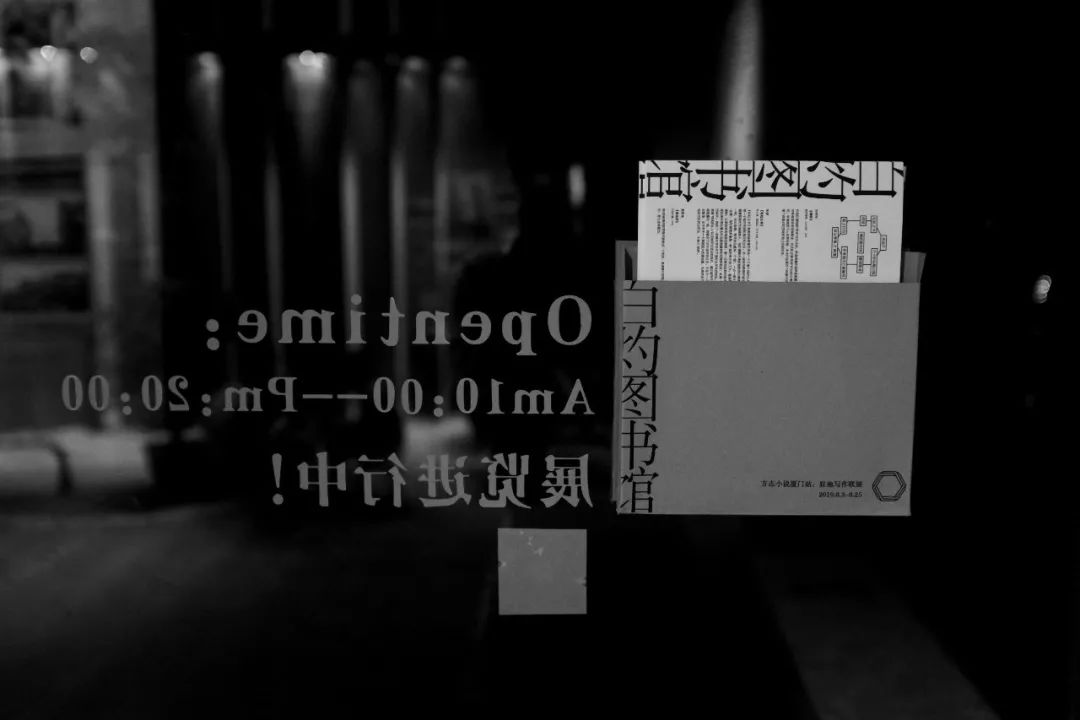在地实践打开在地工作界面
Local practice
Xiamen
厦门
Thinking Through Ocean, TCCA
年度项目,《海洋学》,红顶艺术中心
The Myth of Seas, Tang Nannan solo exhibition, TCCA
《四海志》,红顶艺术中心
Shapowei,Xiamen
沙坡尾,厦门
BJOY Library, B-joy Space
《白灼图书馆》,白灼空间
Shapowei: Write the Reality with the Art of Fishing
《沙坡尾,用渔法书写现实》
Houtian,xiamen
后田,厦门
The Outdoor Merchant in the Open-air Market series
《露天市场的江湖骗子》系列剧场
Houtian: An ongoing Chautauqua
《后田:行进中的一场地方肖陶扩》
Fangzhi, Co-Resident Writing Program
《方志小说——联合驻村写作计划》
A Cat without Clothing, Lin Guiming solo exhibition, 404 Not Found Lab
《不穿衣的猫-林桂明个人项目》,404 Not Found Lab
The Wind Will Carry Us, Lin Ruanchong solo exhibition, 404 Not Found Lab,
《驾驭风的技术-林銮崇个人项目》,404 Not Found Lab
Wugao Village, Nianghua
巫高村,宁化
Wugao Project, Ton Zwerver&Kong Delin
《巫高计划》,Ton Zwerver&孔德林
Local practice
2017-CURRENT
Xiamen
厦门
Thinking Through Ocean, TCCA
年度项目,《海洋学》,红顶艺术中心
The Myth of Seas, Tang Nannan solo exhibition, TCCA
《四海志》,红顶艺术中心
Shapowei,Xiamen
沙坡尾,厦门
BJOY Library, B-joy Space
《白灼图书馆》,白灼空间
Shapowei: Write the Reality with the Art of Fishing
《沙坡尾,用渔法书写现实》
Houtian,xiamen
后田,厦门
The Outdoor Merchant in the Open-air Market series
《露天市场的江湖骗子》系列剧场
Houtian: An ongoing Chautauqua
《后田:行进中的一场地方肖陶扩》
Fangzhi, Co-Resident Writing Program
《方志小说——联合驻村写作计划》
A Cat without Clothing, Lin Guiming solo exhibition, 404 Not Found Lab
《不穿衣的猫-林桂明个人项目》,404 Not Found Lab
The Wind Will Carry Us, Lin Ruanchong solo exhibition, 404 Not Found Lab,
《驾驭风的技术-林銮崇个人项目》,404 Not Found Lab
Wugao Village, Nianghua
巫高村,宁化
Wugao Project, Ton Zwerver&Kong Delin
《巫高计划》,Ton Zwerver&孔德林
白灼图书馆
BJOY Library
2019
方志小说厦门站 驻地写作联展
策展人:余雨萍
艺术家:陈丹笛子 厦门沙坡尾、韩里林 广州新造镇、胡小隆 泉州华侨新村、黄雯青 泉州华侨新村、仇佳 厦门沙坡尾 、王威 浙江徐岙底、肖竞 安徽潭口村、许炜裕 广州新造镇、杨茜 安徽齐云小镇、朱湘 厦门沙坡尾
展期:2019.8.3 - 2019.8.25
开幕:2019.8.3(周六),17:00
地点:白灼空间,厦门 思明区 大学路107号 项目合作:碧山杂志书、单读、野骨力艺术项目、轴艺术项目
项目支持:新造空间、大象·家书房客栈、五排五号咖啡
视觉设计:林鹭琪
Gazetteer-Novel in Xiamen:
Group Exhibition of Writing Residency
Curator: Yu Yuping
Artists: Chen Dandizi, Linlin, Hu Xiaolong, Huang Wenqing, Qiu Jia, Wang Wei, Xiao Jing, Xu Weiyu, Yang Qian, Zhu Xiang
Duration: 2019.8.3 - 2019.8.25
Opening: 2019.8.3 (Sat.), 17:00
Venue: BJOY IMAGE, No.107 Daxue Road, Siming District, Xiamen
Cooperation: Bi Shan Magazine, Dan Du, WEAP, Axis Art Project
Support: Making Space, Never House, Five Cafe
Visual Design: Lin Luqi
去年方志小说选择了两个自然村落(浙江徐岙底、安徽潭口村)和四个城镇社区(安徽齐云小镇、泉州华侨新村、厦门沙坡尾、广州新造镇)陆续展开了为期一周的驻地写作,最后产出的文本,在与观众遭遇之前,作为“文本之物”展示在这座临时而起(某种意义上其实是永恒)的图书馆里。文本之物悬置了对任何既定地域的指涉,不代表具有总结性的经验和错位的感悟,它们背后关于山河地理或是人文记忆的意义在这一刻消失,被重新编目上架。六个南方村镇的身份被折叠到可见文本的背面,可见的也不是发出惊叹或惊奇的面貌,而是驻地作者作为旅人生活在一个描述和现实或许并不匹配的日常。
在这座图书馆里,策展人将退回成为一个拿着鸡毛掸子的管理员——一个有仪式感的照看者(某种意义上,这个角色回归到了care和cure的最初转换之际)。沿着亲手搭建起来的看似并不优雅美观的六边形对称,正向或反向无尽地探索。掸去文本与字迹间的灰尘,摩挲着试图“测量”作者与驻留之地的距离,他(或她)走进去了吗?还是依旧停留在门外?也许这个问题同样可以丢给管理员自己,这一“或远或近”的感受也将被代入观展的路径。当然这里的距离并非客观意义上的物理距离,也不带有试图区分优劣的排序。
从耳边絮絮不止的独白掺杂着纷纷议论开始,要寻找一个未知的女人,戴上手套小心地翻阅看似古早的档案,却不慎跌入黑白底片的影子里,头晕目眩间因为孤独的角力滑动到了另一个仙境,是的仙境,每隔六十秒就会醒来一次,重新回到世俗与欲望之中。灵魂却轻飘飘地升空,成为观看自己的自己——另一个自己沿着亲手搭建起来的看似并不优雅美观的六边形对称,掸去文本与字迹间的灰尘,勉强能辨认出图像是地理上不可相逢的重合,但在神话传说里或许有据可依、有物可考。此刻(一个假想的开幕的时刻)岸上的“船队”则引导着灵魂加入或者回归,在闪动的影像里找到了一个女人的名字。而在三里之遥,守夜者亮起了延时的灯。
从任何常规的路线进入或者观看,这个无限的六边形或许根本无法显现。就像邓拉文说的,“你得想想宇宙”。
或者想想“宙宇”。
Last year, Gazetteer-Novel selected two natural villages (Xu'aodi in Zhejiang, Tankou in Anhui) and four urban communities (the town of Qiyun in Anhui, Oversea Chinese Village in Quanzhou, Shapowei in Xiamen, and the town of Xinzao in Guangzhou) for a-week-long writing residencies. Before meeting the audience, the text is displayed as its object in this temporary (also eternal in a kind) library. The object of the textsuspends the reference to any given region and is re-catalogued in the library without any summative experience and typical feeling of misplacement, behind which, the significance of geographical or human memory disappears at this moment. The identities of the six southern villages (or towns) are folded to the back of the visible text, which is not presented as a marvel or a surprise, but the author’s daily life as a traveler in somewhere else .
In the library, the curator will return to be a librarian with a feather duster - a ceremonial caretaker (in a sense, the character returns to the initial transition between care and cure). Explore endlessly along the seemingly inelegant hexagonal symmetry, dust off the text and try to "measure" the distance between the author and the resident place:Did he (or she) go inside? Or is he (or she) still outside the door? Perhaps the librarian can ask herself this question, and this feeling of "far or close" will be involved in the path of the exhibition. Of course, the distance here is not the physical distance in the objective sense, nor does it have the ranking of good or bad.
Start from the whispering monologue mingled with buzzing - they are looking for an unknown woman. Put on gloves to carefully read the ancient archives, but accidentally fall into the shadow of black and white negative films. Because of the lonely force, slid into another wonderland in dizzy, yes Wonderland, where will wake up every 60 seconds and return to the worldly and desire. But the soul flutters off and becomes the one who is watching oneself - explore endlessly along the seemingly inelegant hexagonal symmetry, dust off the text, barely recognize that the image was a untouchable coincidence in geographically, but in myths and legends there might be evidence to follow. At this moment (a hypothetical opening moment), the shore "flotilla" leading the soul to join or return, find out a woman's name in the flashing images. Three miles away, the night keeper turns on the delayed light.
This infinite hexagon may not appear at all, if you enter or watch from any conventional route. As Dunraven said, "Think about the universe." Or the reverse.
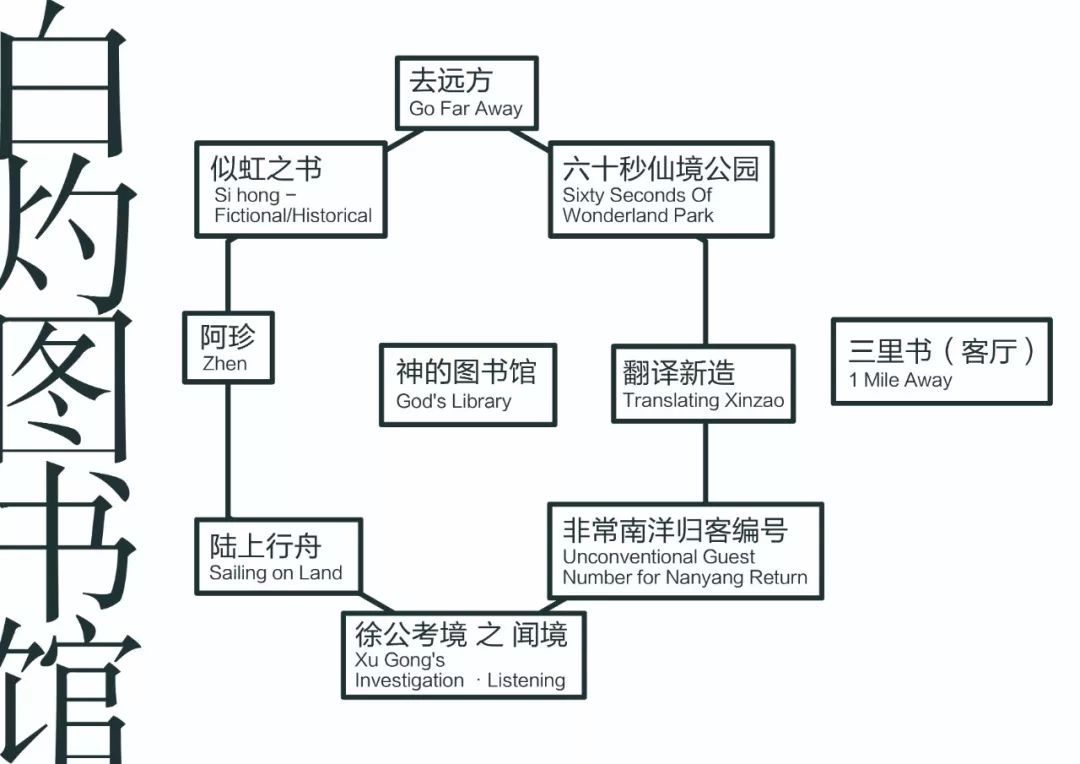
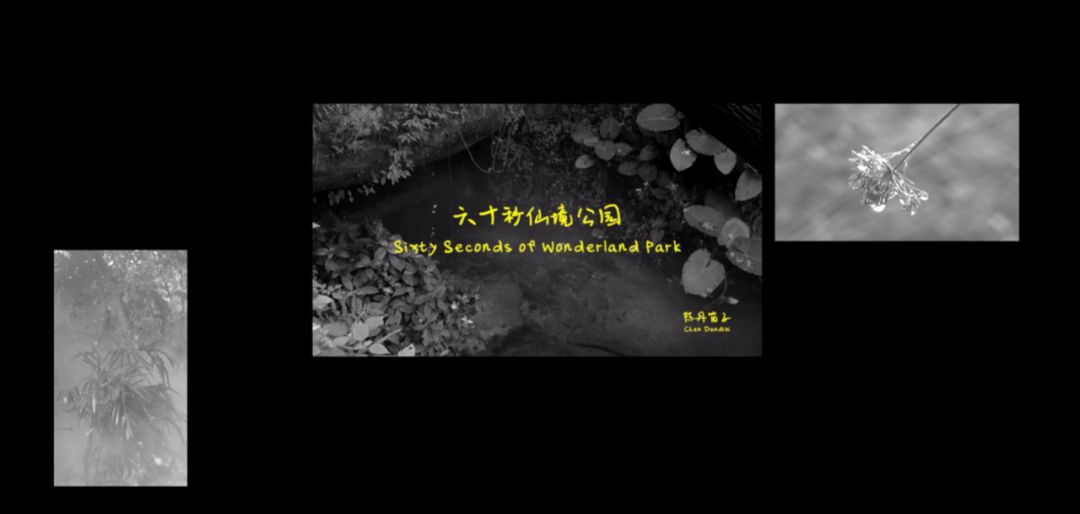 陈丹笛子,六十秒仙境公园,三频录像,彩色,有声,9分45秒,2019
陈丹笛子,六十秒仙境公园,三频录像,彩色,有声,9分45秒,2019Chen Dandizi, Sixty Seconds Of Wonderland Park, Three-channel video, color, sound, 9'45", 2019
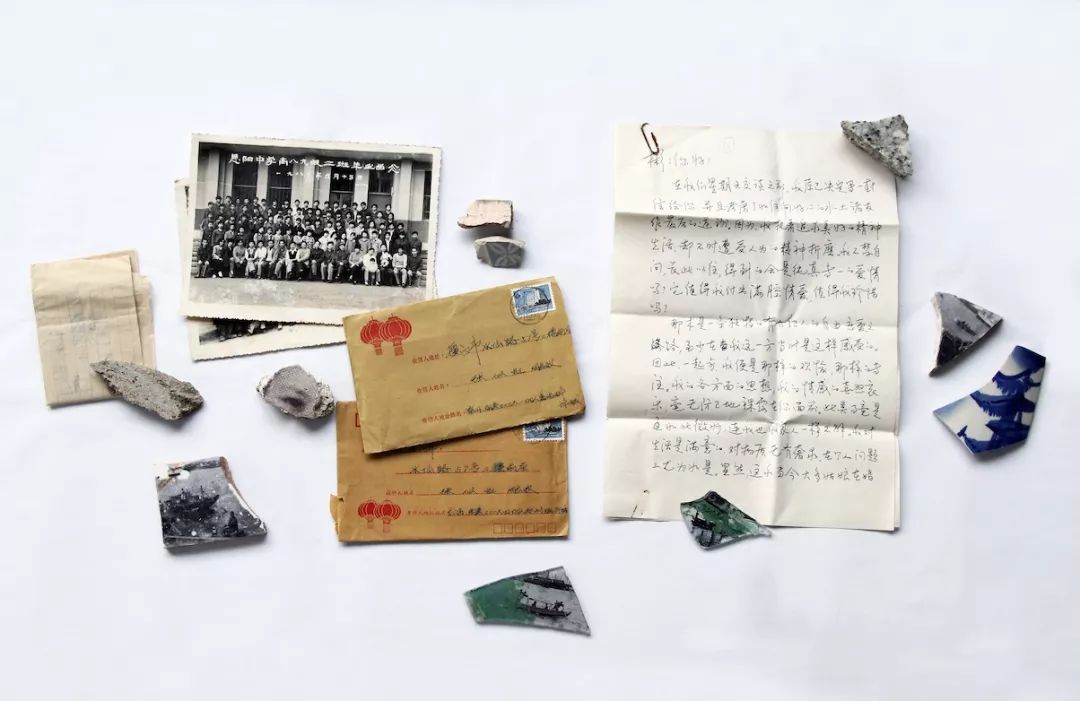
朱湘,似虹之书,手工书、现成品,尺寸可变,2018-2019
Zhu Xiang,Si hong - Fictional / Historical, Handmade book and ready-made, variable size, 2018-2019
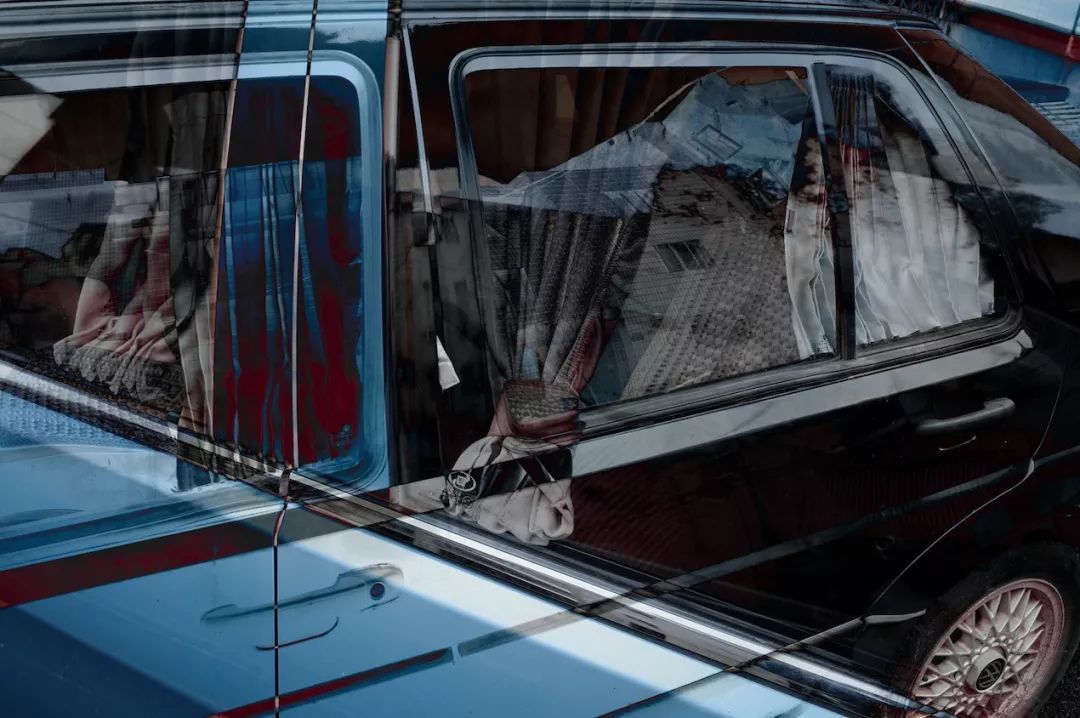
胡小隆,非常南洋归客编号,摄影,绢纱布,尺寸可变,2019
Hu Xiaolong,Unconventional Guest Number for Nanyang Return, Photography, variable size, 2019
Hu Xiaolong,Unconventional Guest Number for Nanyang Return, Photography, variable size, 2019
讲座剧场 | 《三里书》艺术家:肖竞
时间:8月17日-18日,15:00-16:00,19:30-20:30
地点:白灼客厅
Lecture Performing: 1 Mile Away
Artist: Xiao Jing
Time: Aug 17th and 18th, 15:00-16:00, 19:30-20:30
Venue: The living room of BJOY
三里,是西坑村从所在的山谷到外面的距离。几百年来,这个小村落一直过着近似与世隔绝的生活。上世纪90年代,随着旅游业的崛起,商人和政府看到了这片秀丽山谷成功的可能,不断尝试着各种方式的推广。2013年,山谷正式开启了新一期文化旅游业的开发,西坑村村民陆续搬至三里外的潭口村。
这个作品将从个人的角度,呈现并分享艺术家在当地的所见所闻,以西坑作为中国广褒大地的一个缩影,讨论当下的乡村建设的可能。若干年后,年轻人在外定居,年长者依次离去,“西坑”将被从地图上抹去。但只要记忆传承,西坑村就永远不会消失。艺术家希望《三里书》能为一个历史悠久的微小村庄的持久存在尽一份绵薄之力,也让许多类似“西坑村”的生活留在集体记忆中。
这个作品将从个人的角度,呈现并分享艺术家在当地的所见所闻,以西坑作为中国广褒大地的一个缩影,讨论当下的乡村建设的可能。若干年后,年轻人在外定居,年长者依次离去,“西坑”将被从地图上抹去。但只要记忆传承,西坑村就永远不会消失。艺术家希望《三里书》能为一个历史悠久的微小村庄的持久存在尽一份绵薄之力,也让许多类似“西坑村”的生活留在集体记忆中。
The distance from Xikeng village tooutside is about 1 mile. For hundreds of years, this small village has lived innear isolation. In the 1990s, with the rise of tourism, businessmen andgovernments saw the potential for success in the beautiful valley and tried topromote it in various ways. In 2013, the valley officially started a formalphase of cultural tourism development. The villagers of Xikeng moved to Tankouvillage 1 mile away.
This work will present what I have seen and heard in the local area from a personal perspective. As a miniature of China's vast land, Xikeng demonstrates the possibility of current rural construction. After a few years, the young people will settle out, and the old people will pass away, and the Xikeng will be wiped off from the maps. But as long as the memory passes on, the village will never disappear. I hope 1 mile Away can contribute to the lasting existence ofa tiny village in the collective memory, so do many villages like "Xikeng".
This work will present what I have seen and heard in the local area from a personal perspective. As a miniature of China's vast land, Xikeng demonstrates the possibility of current rural construction. After a few years, the young people will settle out, and the old people will pass away, and the Xikeng will be wiped off from the maps. But as long as the memory passes on, the village will never disappear. I hope 1 mile Away can contribute to the lasting existence ofa tiny village in the collective memory, so do many villages like "Xikeng".
